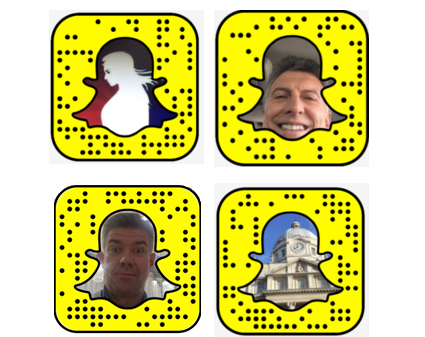 Snapchat is the fastest growing social media platform and, according to the latest statistics, almost two thirds of its users are aged between 13 and 24 years old, making it the ultimate platform to reach young audiences. It therefore comes as no surprise that government leaders are starting to set up accounts on the platform to reach out to future leaders.
Snapchat is the fastest growing social media platform and, according to the latest statistics, almost two thirds of its users are aged between 13 and 24 years old, making it the ultimate platform to reach young audiences. It therefore comes as no surprise that government leaders are starting to set up accounts on the platform to reach out to future leaders.
Snapchat is unique because it doesn’t indicate the number of followers, nor the number of views, of each post, which disappear after 24 hours. It is also a ‘safe’ social network for governments, as users cannot publically comment or criticize other users’ posts or profiles. Younger Snapchat users seem to prefer the social network for its easy-to-use, real-time messaging experience and its playful filters and features.
For government officials and institutions, it offers a new form of casual communications and linear storytelling. According to Burson-Marsteller’s research, 16 heads of state and international organizations have set up official profiles on Snapchat. Our team identified four presidents, three governments, two foreign ministries and one foreign minister who are active on the platform, as well as six international organizations, namely the European Council (EUCouncil), the French government (GouvernmentFR) and French President François HollandeFR, Argentinian President MauricioMacri, the Irish government (MerrionStreet) and Irish President Michael Higgins (PresidentIRL), the U.S. StateDept, the UKForeignOffice, and the WhiteHouse. International organizations active on Snapchat worth following are the United-Nations and the UNGeneva. UNICEF, the World Economic Forum (weforum) and the European Parliament europarl and ESA, the eurospaceagency.
Using Snapchat
Using Snapchat is fairly easy with its intuitive design and swiping options. Initially, the social media platform was used to share pictures and videos, which could be personalized by adding a caption limited to 80 characters or by scribbling on your post in freehand.
The most unique feature of the social media platform is the time limit on the images and videos you send. Users are only able to see your snaps for a maximum of 10 seconds, after that they will simply disappear. Replays are only possible once a day in most countries.
If you want your message to be shown to all of your contacts, you can post a snap to your ‘story’, which can be viewed by your followers an unlimited amount of times within 24 hours.
The photo screen is the default screen. Swipe upwards to find your friends and contacts, swipe left to chat and swipe right to see the stories of the people you follow and swipe right again to the ‘Discover’ tab with 18 publishers, including Buzzfeed, CNN and Mashable, producing tailor-made content for the platform..
Currently, there is no publically available list of government Snapchat users. If the organization is not in your contacts you will have to know the Snapchat handle or you can scan its ‘snapcode’ if it has advertised its handle on other social media sites or embedded a link on its website.
Interestingly, you cannot see how many followers a Snapchatter has. You will only be able to see the ‘Snapchat score,” which indicates a user’s level of activity, if that user follows you. And finally, you cannot like or publically comment on snaps from other users. The only way to engage with a Snapchatter is by replying privately to his or her snaps.
Some governments, such as the Polish Prime Minister (PremierRP), seem to have reserved their Snapchat handles but are not active and lack an official avatar. Snapchat does not yet verify its users, but the social media platform is planning to roll out verified accounts in the near future.
Recently Snapchat has gained huge interest through the introduction of lenses – in seconds your face can be transformed into a bunny rabbit, or you can vomit rainbows. Companies can now sponsor lenses; a recent example is the new Batman lens for the new Batman vs. Superman video.
Despite its limitations some governments have discovered Snapchat to be a formidable broadcasting tool to target a decidedly younger audience, either by chronicling the public activities of their leaders or to raise the level of public engagement at selected events. International organizations, particularly UNICEF and the European Parliament, use Snapchat to engage with their followers, often reposting their snaps. And the numbers are impressive: the UK Foreign Office reports an engagement rate of more than 60% (Snap views in comparison to followers) and a 90% completion rate (last snap views minus first snap views) of its stories.
As part of its late March 2016 updated designed to position Snapchat as a rival to Whatsapp and Facebook Messenger, the platform introduced Chat 2.0. The new feature enhances your chat experience and allows you to video chat easily, send audio notes and chat messages. This is certainly a platform to keep eye on for the future.


